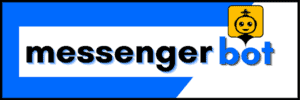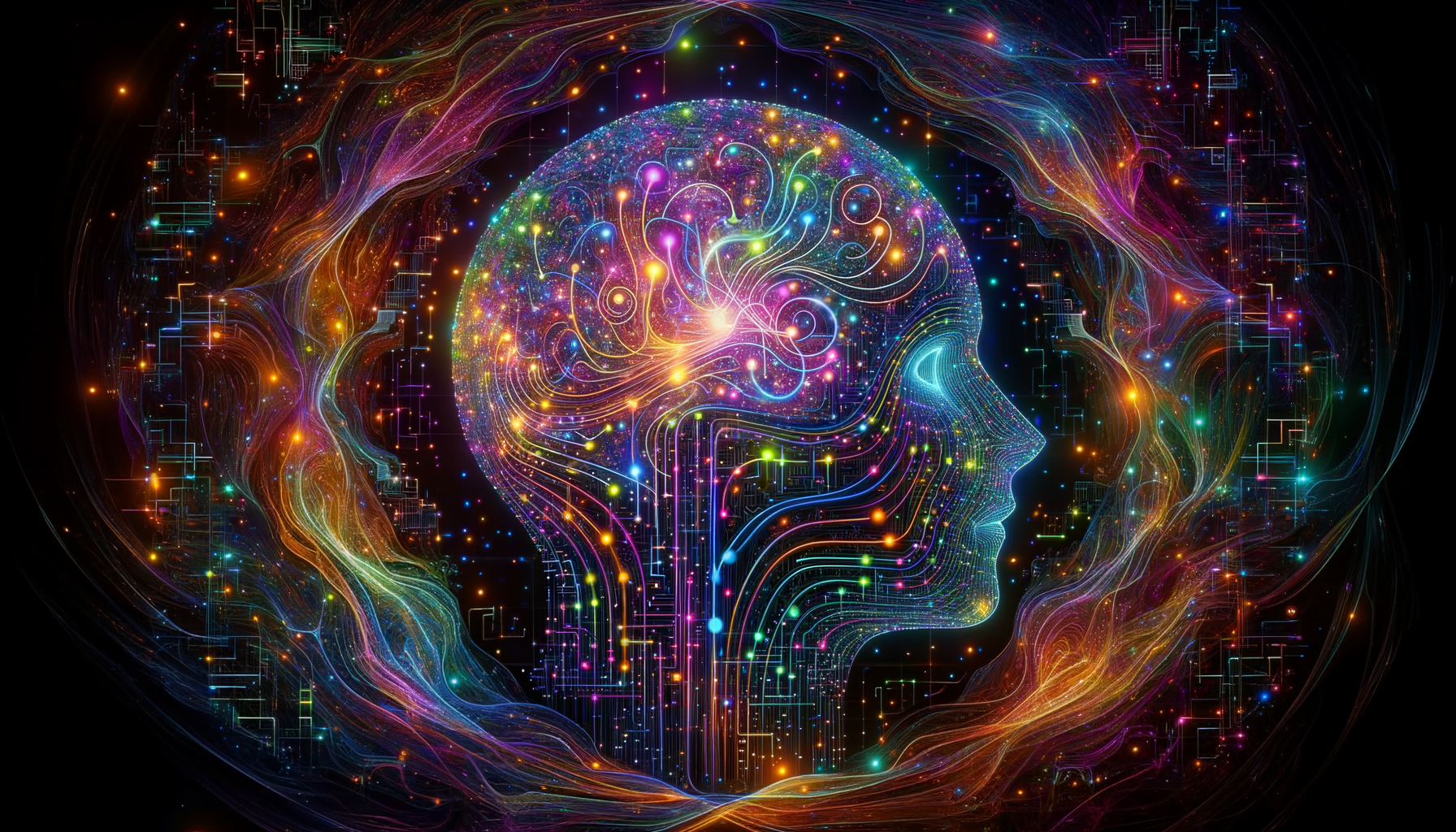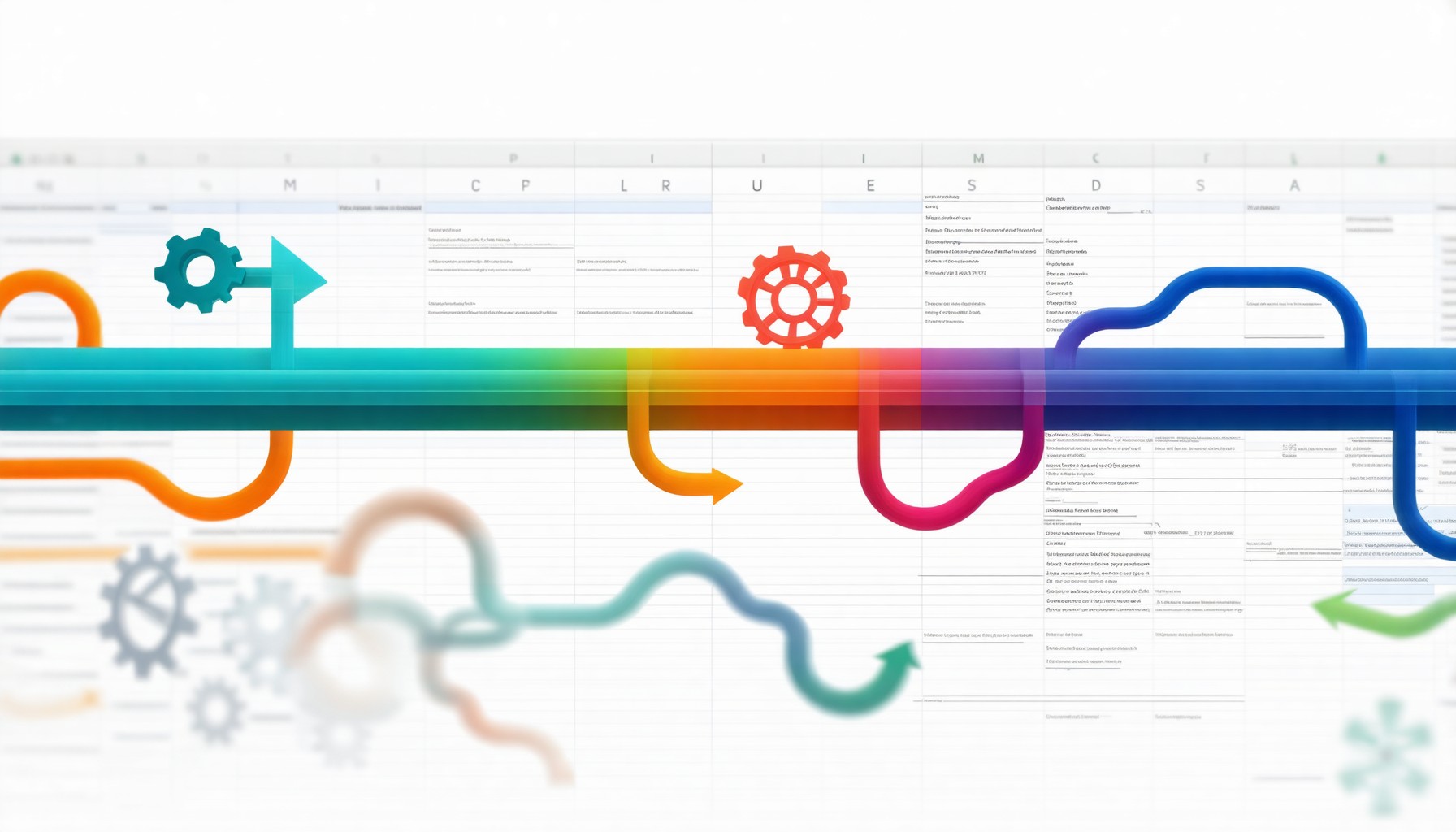In the rapidly evolving world of artificial intelligence, custom AI chatbots have emerged as powerful tools for businesses and individuals alike. These tailored digital assistants offer unprecedented opportunities to streamline communication, enhance customer service, and boost productivity. Whether you’re a tech enthusiast eager to create your own AI chatbot or a business owner looking to leverage customizable chat bots for your brand, this comprehensive guide will walk you through the process step-by-step. From understanding the fundamentals of custom AI chatbots to exploring advanced features like voice integration, we’ll cover everything you need to know to build, customize, and deploy your very own AI-powered conversational agent. Get ready to dive into the exciting realm of custom AI bot development and unlock the potential of personalized artificial intelligence.
I. Understanding Custom AI Chatbots
In today’s digital landscape, custom AI chatbots have become essential tools for businesses looking to enhance their customer engagement and streamline operations. As we delve into the world of custom AI chatbots, it’s crucial to understand their capabilities, benefits, and how they can be tailored to meet specific business needs.
A. Can I create my own AI chatbot?
Yes, you can create your own AI chatbot using various methods, from no-code platforms to advanced programming techniques. Here’s how:
- No-Code Platforms:
- Tidio: Offers free AI-powered tools for building chatbots with intent recognition
- MobileMonkey: Visual chatbot builder with AI capabilities
- Chatfuel: User-friendly platform for Facebook Messenger bots
- Low-Code Solutions:
- Dialogflow: Google’s natural language processing platform
- IBM Watson Assistant: Enterprise-grade conversational AI
- Programming Approaches:
- Python libraries: TensorFlow, PyTorch, NLTK for custom AI models
- API integration: OpenAI’s GPT-3, Microsoft Bot Framework
- Key Steps:
- Define your chatbot’s purpose and scope
- Design conversation flows and user intents
- Develop or integrate natural language processing
- Train your model with diverse datasets
- Implement and test across multiple scenarios
- Deploy on your chosen platform (website, app, messaging service)
- Advanced Features:
- Sentiment analysis for empathetic responses
- Multi-language support using translation APIs
- Integration with backend systems for personalized interactions
- Ethical Considerations:
- Implement clear disclosure that users are interacting with AI
- Ensure data privacy and security compliance (GDPR, CCPA)
- Develop failsafes for inappropriate content or requests
- Continuous Improvement:
- Analyze chatbot performance metrics
- Gather user feedback for refinement
- Regularly update training data and AI models
By leveraging these tools and techniques, you can create sophisticated AI chatbots tailored to your specific needs, enhancing customer engagement and automating conversations across various platforms.
At Messenger Bot, we offer a powerful platform that combines ease of use with advanced AI capabilities, allowing businesses to create custom AI chatbots without extensive coding knowledge. Our solution integrates seamlessly with popular messaging platforms, making it an ideal choice for businesses looking to enhance their customer engagement strategies.
B. Benefits of custom AI chatbots
Custom AI chatbots offer numerous advantages for businesses across various industries. Here are some key benefits:
- 24/7 Availability: Custom AI chatbots provide round-the-clock customer support, ensuring that your business is always accessible to customers, regardless of time zones or holidays.
- Cost Efficiency: By automating routine inquiries and tasks, custom AI chatbots can significantly reduce operational costs associated with customer service.
- Scalability: As your business grows, custom AI chatbots can handle an increasing volume of interactions without the need for proportional increases in staffing.
- Personalization: Advanced AI algorithms enable chatbots to deliver personalized experiences, remembering user preferences and past interactions to provide tailored recommendations and solutions.
- Multilingual Support: Custom AI chatbots can be programmed to communicate in multiple languages, breaking language barriers and expanding your business’s global reach.
- Data Collection and Analysis: Chatbots can gather valuable customer data and insights, helping businesses make informed decisions and improve their products or services.
- Improved Customer Experience: By providing instant responses and accurate information, custom AI chatbots can enhance customer satisfaction and loyalty.
- Lead Generation: Chatbots can qualify leads through interactive conversations, helping businesses streamline their lead generation process.
- Consistency: Custom AI chatbots ensure consistent messaging and branding across all customer interactions, maintaining a unified brand voice.
- Integration Capabilities: These chatbots can be integrated with various business systems, such as CRM platforms, to provide a seamless customer experience across different touchpoints.
By leveraging the power of custom AI chatbots, businesses can significantly enhance their customer service capabilities, streamline operations, and gain a competitive edge in today’s digital marketplace. With platforms like Messenger Bot, creating and deploying these advanced chatbots has become more accessible than ever, allowing businesses of all sizes to harness the benefits of AI-driven customer engagement.
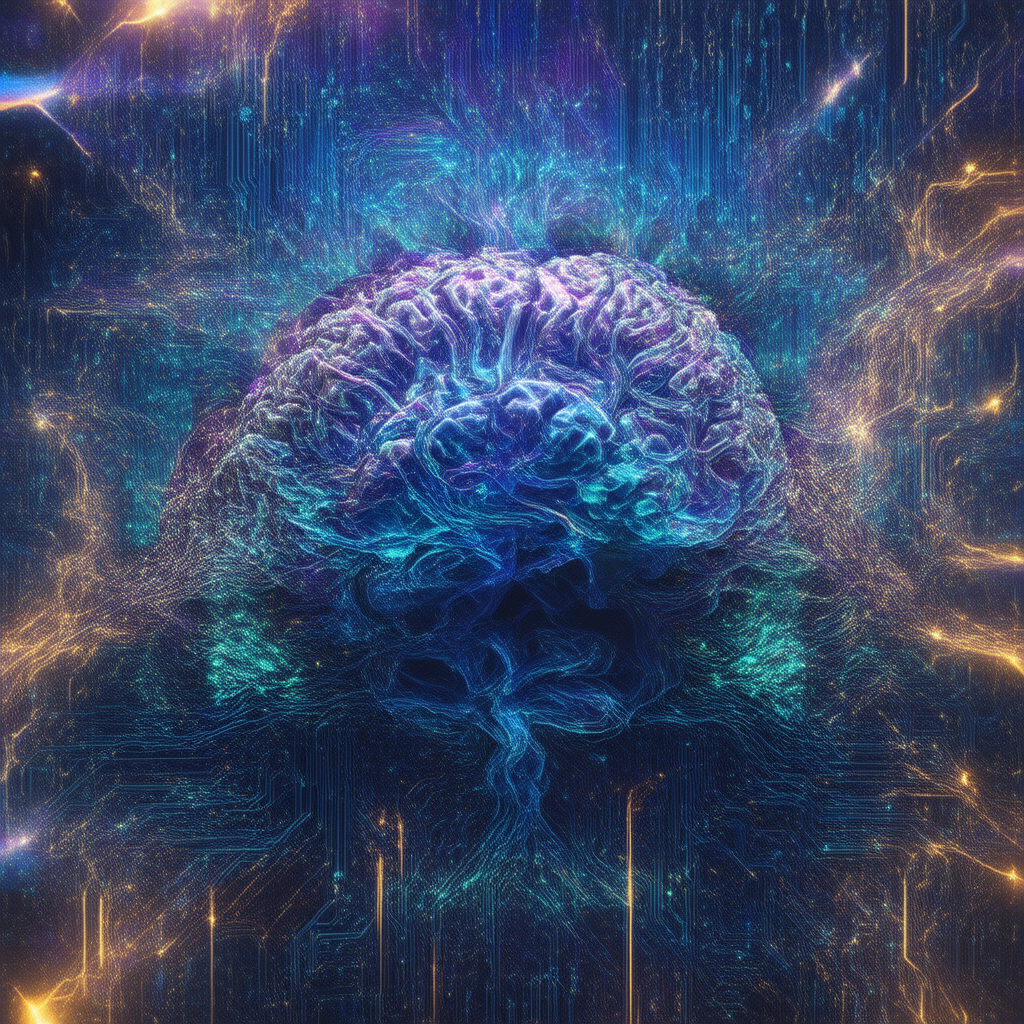
II. Getting Started with Custom AI Chatbot Development
Embarking on the journey of custom AI chatbot development can be an exciting and rewarding experience. With the right tools and knowledge, you can create a powerful AI assistant tailored to your specific needs. Let’s explore the possibilities and resources available for getting started with your own custom AI chatbot.
A. Can I create my own AI for free?
Yes, creating your own AI assistant for free is entirely possible in 2024, thanks to a variety of accessible options:
- Open-source frameworks: Platforms like TensorFlow, PyTorch, and Rasa allow you to build custom AI models without cost. These powerful tools provide the flexibility to create sophisticated AI chatbots, though they require some programming knowledge.
- No-code AI platforms: For beginners, tools like Google’s Teachable Machine and MIT’s Scratch AI extension offer user-friendly, drag-and-drop interfaces for AI creation. These platforms are excellent for those looking to dip their toes into AI development without diving deep into coding.
- Cloud-based services with free tiers: Major providers like IBM Watson, Microsoft Azure Cognitive Services, and Google Cloud AI offer free tiers that allow you to experiment with advanced AI capabilities. These services can be particularly useful for developing chatbots with natural language processing abilities.
- DIY voice assistants: Open-source projects like Mycroft AI and Jasper Project enable you to create your own voice-activated AI assistants, which can be integrated into chatbot functionalities.
- Chatbot creation tools: Platforms such as Botpress and BOTKIT provide free options for creating chatbots with varying degrees of AI integration. These tools often come with pre-built components that simplify the development process.
At Messenger Bot, we understand the importance of accessibility in AI development. While our platform offers advanced features for businesses, we also recognize the value of these free resources for those just starting their AI journey. Our free trial offer allows you to explore professional-grade chatbot development without initial investment, bridging the gap between free tools and enterprise-level solutions.
It’s important to note that while these free options are powerful, they may require technical skills or time investment to learn. For those looking to create more sophisticated chatbots with minimal coding, platforms like Brain Pod AI offer user-friendly interfaces combined with advanced AI capabilities, though they may come with associated costs for premium features.
B. Custom AI chatbot Reddit: Community insights
Reddit serves as a valuable resource for aspiring chatbot developers, offering a wealth of community insights and discussions. Here’s what you can find on Reddit regarding custom AI chatbots:
- r/artificial: This subreddit is a hub for general AI discussions, including chatbot development. Users often share their projects, ask for advice, and discuss the latest trends in AI technology.
- r/MachineLearning: While focused on broader machine learning topics, this community frequently discusses natural language processing and chatbot algorithms.
- r/chatbots: A dedicated subreddit for chatbot enthusiasts, where you can find discussions on development techniques, use cases, and troubleshooting tips.
- r/rasa_nlu: For those interested in using the Rasa framework, this community provides specific support and shares experiences in building conversational AI.
- r/OpenAI: Discussions here often revolve around GPT models and their applications in chatbot development, providing insights into cutting-edge AI technologies.
Key insights from Reddit communities include:
- Emphasis on data quality for training chatbots
- Recommendations for handling edge cases and improving conversational flow
- Debates on the ethical implications of AI chatbots
- Comparisons of different frameworks and platforms for chatbot development
- Tips for integrating chatbots with existing systems and APIs
At Messenger Bot, we value the insights shared by the developer community. We encourage our users to participate in these discussions and leverage community knowledge to enhance their chatbot development skills. Our tutorials complement these community insights, providing structured guidance alongside the collaborative wisdom found on platforms like Reddit.
Remember, while Reddit can be an excellent source of information, it’s important to verify advice and techniques with official documentation and reputable sources. As you explore these communities, you’ll find that the world of custom AI chatbot development is vibrant and ever-evolving, with endless possibilities for innovation and learning.
III. Building Your Own ChatGPT-like AI
At Messenger Bot, we’re always excited about the latest advancements in AI technology. The rise of ChatGPT has sparked a wave of interest in creating sophisticated AI chatbots. Let’s explore how you can build your own ChatGPT-like AI and the process involved.
A. Can I build my own ChatGPT?
Yes, you can build your own AI chatbot similar to ChatGPT, but it’s important to understand that it requires significant resources and expertise. Here’s a comprehensive guide to get you started:
- Data Collection and Preparation:
- Gather diverse, high-quality text data
- Clean and preprocess the data
- Ensure data compliance with privacy regulations
- Choose a Language Model:
- Options include GPT-3, BERT, or open-source alternatives like GPT-J
- Consider factors like model size, performance, and licensing
- Fine-tune the Model:
- Adapt the pre-trained model to your specific use case
- Use transfer learning techniques for efficiency
- Develop the Chatbot Interface:
- Create a user-friendly frontend (web or app-based)
- Implement real-time communication protocols
- Implement Safety Measures:
- Content filtering for inappropriate responses
- User input validation to prevent misuse
- Deploy and Scale:
- Choose a cloud platform (AWS, Google Cloud, Azure)
- Optimize for performance and cost-efficiency
- Continuous Improvement:
- Monitor user interactions and feedback
- Regularly update the model with new data
For individuals without extensive AI expertise, there are alternatives to consider:
- Using OpenAI’s API to access GPT-3 capabilities
- Exploring no-code AI platforms like Replika or Botpress
- Customizing existing open-source chatbot frameworks
At Messenger Bot, we understand the complexities involved in building advanced AI chatbots. That’s why we offer a free trial of our platform, allowing you to experience the power of AI-driven chatbots without the need for extensive development resources. Our solution provides a balance between customization and ease of use, making it accessible for businesses of all sizes.
Remember, building a ChatGPT-level AI requires substantial computing power and specialized knowledge in natural language processing and machine learning. It’s a challenging but rewarding endeavor that pushes the boundaries of what’s possible in AI communication.
B. Custom GPT chatbot development process
Developing a custom GPT chatbot involves a series of steps that blend technical expertise with creative design. Here’s a detailed look at the process:
- Define Your Chatbot’s Purpose:
- Identify the specific use case and goals for your chatbot
- Determine the target audience and their needs
- Outline the key functionalities and features required
- Data Collection and Curation:
- Gather relevant datasets for training your model
- Ensure data quality and diversity to avoid biases
- Consider using conversational AI examples to guide your data collection
- Model Selection and Training:
- Choose between fine-tuning an existing GPT model or training from scratch
- Implement transfer learning techniques for efficiency
- Utilize cloud-based GPU resources for faster training
- Dialogue Management:
- Design conversation flows and decision trees
- Implement context tracking for more coherent interactions
- Develop fallback mechanisms for handling unexpected inputs
- Natural Language Understanding (NLU):
- Implement intent recognition and entity extraction
- Develop sentiment analysis capabilities
- Enhance language understanding with custom dictionaries and synonyms
- Response Generation:
- Fine-tune the GPT model for generating contextually appropriate responses
- Implement response filtering to ensure safe and relevant outputs
- Develop mechanisms for personality consistency in responses
- Integration and Deployment:
- Develop APIs for seamless integration with various platforms
- Implement security measures like encryption and authentication
- Set up monitoring and logging systems for performance tracking
- Testing and Iteration:
- Conduct extensive user testing to identify areas for improvement
- Implement A/B testing for different conversational strategies
- Continuously refine the model based on user feedback and performance metrics
At Messenger Bot, we’ve streamlined this process to make custom AI chatbot development accessible to businesses of all sizes. Our platform incorporates many of these complex steps into an intuitive interface, allowing you to focus on crafting the perfect conversational experience for your audience.
For those looking to dive deeper into the technical aspects of GPT chatbot development, resources like OpenAI’s GPT-3 GitHub repository and Hugging Face’s transformers library provide valuable insights and tools. Additionally, platforms like Brain Pod AI offer advanced AI writing capabilities that can complement your chatbot development process, especially in generating diverse training data and response templates.
Remember, the key to successful custom GPT chatbot development lies in continuous learning and adaptation. As you refine your chatbot, pay close attention to user interactions and leverage analytics to drive improvements. With persistence and creativity, you can create a powerful AI assistant that truly enhances your customer engagement strategy.
IV. Customization Options for AI Chatbots
At Messenger Bot, we understand that every business has unique needs when it comes to customer interaction. That’s why we’re excited to explore the world of customizable AI chatbots and how they can transform your customer engagement strategy.
A. Can a chatbot be customized?
Absolutely! Chatbot customization is not only possible but essential for creating tailored user experiences that align with your brand and meet specific business objectives. Here’s how you can customize your AI chatbot:
- Entity Recognition: We implement advanced Natural Language Processing (NLP) to identify key entities like names, email addresses, and user preferences. This allows our custom AI chatbots to understand and respond to user inputs more accurately.
- Personalization Techniques: Our platform enables you to create a more engaging experience by:
- Addressing users by name based on collected data
- Tailoring responses according to user history
- Offering personalized recommendations
- Conversation Flow Design: With Messenger Bot, you can:
- Create branching dialogue trees for complex interactions
- Implement context-aware responses for more natural conversations
- Design fallback mechanisms to handle unexpected user inputs
- Backend Integration: Our custom AI chatbots can seamlessly connect with:
- CRM systems for accessing user data
- Databases for real-time information retrieval
- Various APIs to extend functionality
- Visual Customization: We offer options to:
- Adapt the chatbot interface to match your brand aesthetics
- Implement custom avatars or chat bubbles
- Design responsive layouts for various devices
By leveraging these customization options, you can create a chatbot that not only serves your customers efficiently but also reflects your brand’s unique voice and values. Our free trial allows you to explore these customization features and see how they can benefit your business.
B. Customizable chat bot features
At Messenger Bot, we pride ourselves on offering a wide range of customizable features that allow you to create a truly unique and effective chatbot experience. Here are some of the key customizable chat bot features we offer:
- Multilingual Support:
- Incorporate language detection for global audiences
- Provide seamless translations to break language barriers and expand your reach
- Machine Learning Implementation:
- Utilize ML algorithms to improve response accuracy over time
- Implement sentiment analysis for more empathetic interactions
- Voice and Tone Adjustment:
- Customize language to reflect your brand personality
- Adjust formality levels based on user preferences and context
- Omnichannel Integration:
- Ensure consistent personalization across multiple platforms (web, mobile, social media)
- Master multi-channel strategies for comprehensive customer engagement
- Analytics and Continuous Improvement:
- Implement tracking for user interactions to gather valuable insights
- Use data-driven insights to refine chatbot behavior and performance
- Interactive Elements:
- Incorporate buttons, carousels, and quick replies for enhanced user experience
- Enable image and file sharing capabilities for richer interactions
- Conditional Logic:
- Create dynamic conversation flows based on user inputs and preferences
- Implement if-then scenarios for more intelligent decision-making
- Integration with Human Support:
- Set up seamless handoffs to human agents for complex queries
- Implement chatbot-to-human escalation protocols
These customizable features allow you to create a chatbot that not only meets your specific business needs but also provides an exceptional user experience. At Messenger Bot, we’re committed to helping you leverage these features to their fullest potential.
For businesses looking to explore advanced AI writing capabilities alongside chatbot customization, Brain Pod AI offers complementary tools that can enhance your content creation process. Their AI writing services can be particularly useful in generating diverse training data and response templates for your custom chatbot.
Remember, the key to a successful custom AI chatbot lies in continuous refinement and adaptation. By utilizing our analytics tools and staying attuned to user feedback, you can create a chatbot that evolves with your business and consistently meets your customers’ changing needs.
Ready to start customizing your own AI chatbot? Learn how to set up your first AI chatbot in less than 10 minutes with our easy-to-follow guide. Experience the power of customization and take your customer engagement to the next level with Messenger Bot!
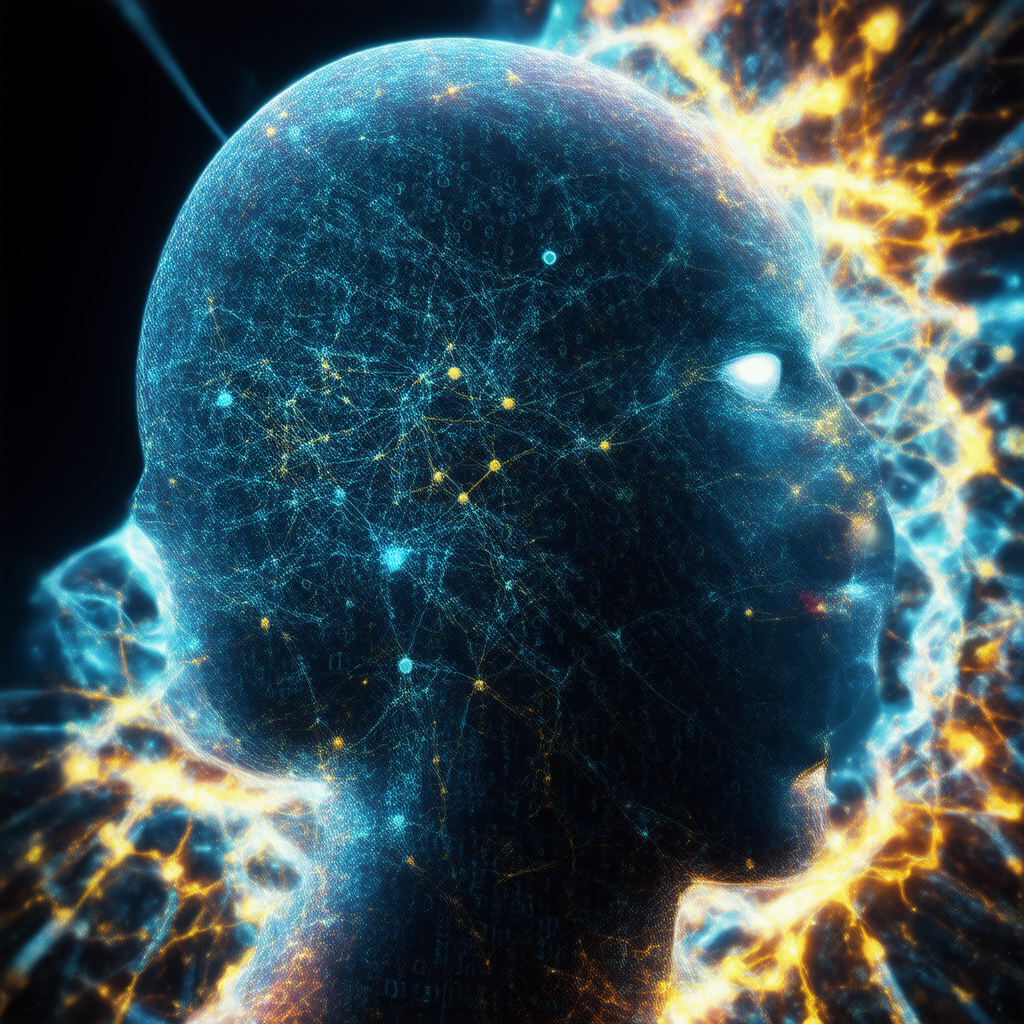
V. Creating a Personal AI Assistant
At Messenger Bot, we’re passionate about empowering individuals to harness the power of AI. Creating a personal AI assistant is an exciting venture that can significantly enhance your productivity and daily life. Let’s explore how you can bring your own AI assistant to life.
A. Can I create my personal AI?
Absolutely! Creating your personal AI is not only possible but increasingly accessible. With the right tools and approach, you can develop an AI assistant tailored to your unique needs. Here’s a comprehensive guide to get you started:
- Choose an AI Development Platform:
- For those comfortable with coding, platforms like OpenAI GPT-3, Google Cloud AI, or IBM Watson offer powerful capabilities.
- If you prefer a no-code approach, consider user-friendly options such as Obviously AI, Create ML, or Akkio.
- Define Your AI’s Purpose:
- Identify specific tasks or problems you want your AI to address.
- Outline the desired functionalities and capabilities of your personal assistant.
- Collect and Prepare Data:
- Gather relevant, high-quality data for training your AI model.
- Clean and preprocess the data to ensure accuracy and effectiveness.
- Train Your AI Model:
- Utilize machine learning algorithms appropriate for your specific tasks.
- Consider implementing transfer learning to leverage pre-trained models and accelerate development.
- Test and Refine:
- Evaluate your AI’s performance using various metrics relevant to your goals.
- Iterate and improve based on feedback and results to enhance functionality.
- Deploy and Integrate:
- Choose a suitable hosting environment, whether cloud-based or local.
- Integrate your AI assistant with existing systems or applications for seamless use.
- Maintain and Update:
- Regularly monitor your AI’s performance and retrain as needed to maintain accuracy.
- Stay informed about AI advancements and incorporate new techniques to keep your assistant cutting-edge.
While creating a personal AI assistant is an exciting project, it’s important to consider ethical implications, scalability, and security throughout the development process. Ensure your AI adheres to principles of fairness, transparency, and privacy protection.
At Messenger Bot, we understand the complexities of AI development. While our platform focuses on business-oriented chatbots, many of the principles we use can be applied to personal AI assistants as well. Our tutorials can provide valuable insights into chatbot development that may be applicable to your personal AI project.
For those looking to explore more advanced AI writing capabilities, Brain Pod AI offers sophisticated tools that can complement your personal AI assistant development. Their AI writing services can be particularly useful in generating diverse training data or enhancing your AI’s language processing capabilities.
B. Make an AI chatbot of yourself: Techniques
Creating an AI chatbot that mimics your personality is an intriguing way to extend your digital presence. Here are some techniques to help you create an AI version of yourself:
- Data Collection:
- Compile a diverse dataset of your written communications (emails, social media posts, text messages).
- Record and transcribe your spoken conversations to capture your verbal patterns.
- Natural Language Processing (NLP):
- Utilize advanced NLP models to analyze your language patterns and speech characteristics.
- Implement sentiment analysis to capture the nuances of your emotional expressions.
- Personality Mapping:
- Take personality tests and incorporate the results into your AI model.
- Define key traits, interests, and knowledge areas that are unique to you.
- Contextual Understanding:
- Train your AI to understand and respond to context-specific queries.
- Implement memory functions to maintain conversation coherence.
- Voice and Speech Patterns:
- If creating a voice-based AI, use voice cloning technology to replicate your speech.
- Incorporate your typical filler words, pauses, and intonations for authenticity.
- Continuous Learning:
- Implement machine learning algorithms that allow your AI to evolve based on new interactions.
- Regularly update the AI with new data to reflect changes in your knowledge and opinions.
- Ethical Considerations:
- Establish clear boundaries for how your AI self can be used.
- Implement safeguards to prevent misuse or misrepresentation.
While creating an AI version of yourself can be a fascinating project, it’s important to approach it with care and consideration. At Messenger Bot, we emphasize the importance of responsible AI development and encourage users to consider the ethical implications of creating AI representations of real individuals.
For those interested in exploring more advanced AI techniques for personal chatbot creation, platforms like Brain Pod AI’s Chat Assistant offer sophisticated tools that can help in developing more nuanced and personalized AI interactions.
Remember, the goal of creating an AI version of yourself should be to enhance and complement your real-world interactions, not to replace them. Use this technology responsibly and creatively to extend your digital presence and explore new ways of engaging with others.
As you embark on this exciting journey of creating a personal AI assistant or an AI version of yourself, keep in mind that the field of AI is rapidly evolving. Stay curious, keep learning, and don’t hesitate to experiment with new techniques and technologies. The future of personal AI is limitless, and you’re at the forefront of this fascinating technological frontier!
VI. Challenges in AI Chatbot Development
Developing custom AI chatbots is an exciting venture, but it comes with its fair share of challenges. At Messenger Bot, we’ve navigated these hurdles and want to share insights to help you in your AI chatbot journey.
A. Is making an AI chatbot hard?
The difficulty of creating an AI chatbot varies depending on the complexity and functionality you’re aiming for. While basic chatbots can be relatively straightforward to implement, more advanced AI-driven chatbots require significant expertise and resources.
Here’s a breakdown of the challenges you might face:
- Natural Language Processing (NLP): Developing a chatbot that can understand and respond to human language naturally is complex. It requires advanced NLP techniques and constant refinement.
- Machine Learning Integration: Implementing machine learning algorithms to improve the chatbot’s responses over time is challenging and requires expertise in AI and data science.
- Data Management: Collecting, cleaning, and managing large datasets for training your AI model can be time-consuming and resource-intensive.
- Integration Complexities: Connecting your chatbot with existing systems and databases can be technically challenging, especially for businesses with complex IT infrastructures.
- Scalability: Ensuring your chatbot can handle increasing volumes of conversations without compromising performance is a significant challenge.
- Multilingual Support: Creating a chatbot that can communicate effectively in multiple languages adds another layer of complexity.
- Contextual Understanding: Developing a chatbot that can maintain context throughout a conversation and understand nuanced human interactions is particularly challenging.
While these challenges exist, tools and platforms are continuously evolving to make custom AI chatbot development more accessible. At Messenger Bot, we’ve developed solutions to address many of these challenges, making it easier for businesses to create sophisticated AI chatbots.
For those looking to explore more advanced AI writing capabilities to enhance their chatbots, Brain Pod AI’s AI Writer offers powerful tools that can help in generating more natural and context-aware responses.
B. Custom AI chatbot GitHub resources
GitHub is a treasure trove of resources for custom AI chatbot development. Here are some valuable repositories and tools you can find on GitHub to aid in your chatbot creation journey:
- Rasa: An open-source machine learning framework for automated text and voice-based conversations. It’s highly customizable and suitable for building contextual AI assistants.
- Botpress: An open-source platform for building, running, and improving conversational AI applications. It offers a visual flow editor and built-in NLU.
- ChatterBot: A Python library that makes it easy to generate automated responses to user inputs. It uses a selection of machine learning algorithms to produce different types of responses.
- DeepPavlov: An open-source conversational AI library built on TensorFlow and Keras. It’s designed for the development of production-ready conversational systems.
- Dialogflow: While not open-source, Dialogflow offers GitHub repositories with sample code and integrations that can be valuable for developers.
- NLTK (Natural Language Toolkit): A leading platform for building Python programs to work with human language data. It’s essential for many NLP tasks in chatbot development.
These resources can significantly accelerate your custom AI chatbot development process. However, it’s important to note that effectively utilizing these tools often requires a solid understanding of programming and AI concepts.
At Messenger Bot, we understand the complexities of chatbot development. That’s why we’ve created a platform that simplifies the process while still allowing for advanced customization. Our tutorials can guide you through the process of creating sophisticated chatbots without the need for extensive coding knowledge.
For those interested in exploring more advanced AI techniques for chatbot development, platforms like Brain Pod AI’s Chat Assistant offer sophisticated tools that can help in developing more nuanced and personalized AI interactions.
Remember, while GitHub resources are invaluable, they’re just one piece of the puzzle. Successful chatbot development also requires a deep understanding of your users’ needs, continuous testing and refinement, and a commitment to delivering value through your AI assistant.
VII. Advanced Features and Future Trends
At Messenger Bot, we’re constantly innovating to stay ahead of the curve in custom AI chatbot technology. As we look to the future, we’re excited about the advanced features and emerging trends that are shaping the landscape of AI-powered communication.
A. Custom AI Bot voice integration
Voice integration is becoming an increasingly important feature in custom AI chatbots, offering a more natural and accessible way for users to interact with digital assistants. Here’s how voice integration is enhancing custom AI bots:
- Natural Language Processing (NLP) Advancements: Improved NLP algorithms allow chatbots to understand and respond to spoken language more accurately, making voice interactions smoother and more intuitive.
- Text-to-Speech (TTS) Technology: Advanced TTS engines are creating more human-like voices for chatbots, reducing the robotic feel of AI interactions and enhancing user engagement.
- Voice Recognition: Sophisticated voice recognition systems enable chatbots to identify individual users, personalize responses, and enhance security through voice authentication.
- Multilingual Support: Voice-enabled chatbots are becoming increasingly proficient in multiple languages, breaking down communication barriers for global businesses.
- Integration with Smart Devices: Custom AI bots with voice capabilities can seamlessly integrate with smart home devices, offering hands-free control and assistance across various platforms.
At Messenger Bot, we’re working on incorporating these advanced voice features into our platform, allowing businesses to create more engaging and accessible custom AI chatbots. Our goal is to make voice integration a seamless part of the chatbot experience, enhancing user interaction and satisfaction.
For those looking to explore more advanced AI capabilities, including sophisticated voice integration, Brain Pod AI’s Chat Assistant offers cutting-edge tools that can help in developing more nuanced and personalized AI interactions with voice support.
B. Customizable chatbot innovations
The field of custom AI chatbots is rapidly evolving, with new innovations constantly emerging. Here are some exciting trends and features we’re seeing in customizable chatbot technology:
- Emotion Recognition: Advanced AI algorithms are being developed to recognize and respond to user emotions, allowing chatbots to provide more empathetic and context-appropriate responses.
- Augmented Reality (AR) Integration: Some chatbots are beginning to incorporate AR features, allowing for interactive visual experiences within chat interfaces.
- Predictive Analytics: AI chatbots are becoming more proactive, using predictive analytics to anticipate user needs and offer solutions before problems arise.
- Blockchain Integration: Some innovative chatbots are utilizing blockchain technology for enhanced security and transparency in transactions and data handling.
- Personalized Avatar Creation: Customizable visual representations or avatars for chatbots are becoming more sophisticated, allowing for a more personalized and engaging user experience.
- IoT Integration: Chatbots are increasingly being integrated with Internet of Things (IoT) devices, allowing for seamless control and monitoring of smart home and office systems.
At Messenger Bot, we’re excited about these innovations and are continuously working to incorporate cutting-edge features into our customizable chatbot platform. Our goal is to provide businesses with the most advanced and effective AI chatbot solutions available.
For those interested in exploring more advanced AI writing capabilities to enhance their chatbots, Brain Pod AI’s AI Writer offers powerful tools that can help in generating more sophisticated and context-aware responses, further elevating the capabilities of custom AI chatbots.
As we look to the future, the potential for custom AI chatbots seems limitless. From more human-like interactions to integration with emerging technologies, these AI assistants are set to revolutionize how businesses communicate with their customers. At Messenger Bot, we’re committed to staying at the forefront of these innovations, providing our clients with the most advanced and effective custom AI chatbot solutions available.
